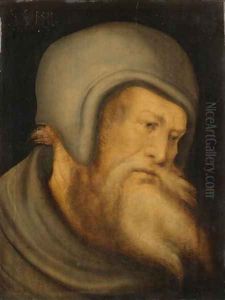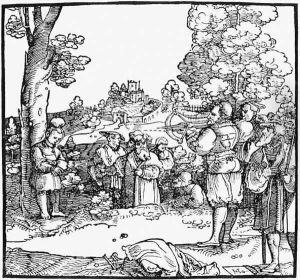Hans the Younger Schaufelein Paintings
Hans Schäufelein, known as Hans the Younger Schaufelein, was a German artist born in 1480 in Nördlingen, a town in the Holy Roman Empire. He was a prominent figure in the Northern Renaissance, distinguished by his work as a painter, draftsman, and woodcut illustrator. Schäufelein's artistic journey began under the tutelage of leading figures of the German Renaissance, including Albrecht Dürer. His time in Dürer's workshop, around the early 1500s, was crucial in shaping his skills and stylistic approaches, particularly in the realm of woodcut design and printmaking.
Schaufelein's body of work is characterized by its detailed and expressive woodcuts, which were widely disseminated and influential in spreading Renaissance ideas across Germany and beyond. His contributions to the printmaking field are notable for their intricate details and dynamic compositions, making him a key figure in the development of the German woodcut tradition. Besides his woodcut prints, Schäufelein also engaged in painting, creating altarpieces, portraits, and religious compositions that displayed his mastery in handling color and form.
Throughout his career, Schäufelein moved between various German cities, including Augsburg and Nuremberg, where he continued to develop his craft and contribute to the vibrant artistic culture of the period. His works were not only appreciated in his time but also left a lasting legacy, influencing subsequent generations of artists. Hans Schäufelein's contributions to the Northern Renaissance underscore his importance in the history of art, particularly in the fields of printmaking and painting. He passed away in 1540, leaving behind a rich oeuvre that continues to be celebrated for its artistic excellence and historical significance.

